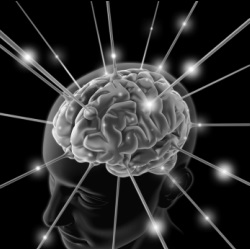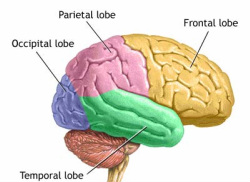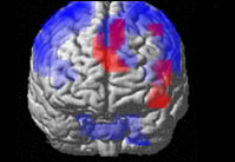The Mind
The brain's many connections to secrecy -

Even in the 1970's, the human brain and it's inner workings remained a mystery. Dr. Wilder Penfield was convinced that our minds worked based on chemical and electrical pulses between the millions of nerve cells located inside the brain. Nearing the end of his life, he had a change of heart and created a major divide in the scientific world. There are those called the Materialists, who believe that cognitive processes - such as thoughts, feelings, and reaoning - are the result of neurons firing within the brain. The others, called Dualists, believe that the mind and body are separated into that of physical and spiritual. The scientific world has only explored the Materialists, simply because the Dualists view is seen as delusional and un-realistic. People who argue otherwise are asked for proof, or a way to test these ideas. Since there has yet to be a test devised or real proof taken from the brain, the Materialist view is still be investigated instead of the Dualist's. However, Penfield himself has said that, "the consciousness of man, the mind, is something not to be reduced by brain mechanisms." Meaning that he believed that the consciousness cannot be soley explained by physical phenomena. One major example, was the idea of a person's "second self" or "inner spirit". It is said that when people have been in an accident, or have a birth defect, or even mental illnesses that this "second self" is released or lost in some way. This "inner spirit" makes us who we are, and contains our actual selves. People who have been in an accident that have left them paralyzed or in a vegetative state can no longer communicate with the rest of the world, cannot make decisions for themselves, can no longer be or do what they want. They are the kinds of people that have lost their "second self". Another example would people who believe that they have psychic abilities. There have been those that said that they have witnessed some sort of power that was derived from a "nonmaterial source" and one that cannot be touched by scientific instruments. These claims are generally dismissed because they happen when the person is in a state - such as dreaming or under hallucinagenic drugs - where they are not fully in touch with reality.
The mind works in strange ways. There are several sections of the brain, each with their own function. These sections are called lobes, and there are 4 main ones: the frontal lobe, the paretial lobe, the occipital lobe, and the temporal lobe. The frontal lobe controls your reasoning, planning, parts of speech, and movement. It is also associated with emotions, and even problem solving. The paretial lobe is also associated with movement, but it also controls your orientation, recognition, and perception of stimuli. This lobe is one of the most frequently used lobes and is also one of the biggest because it is where we store all of our memories. The occipital lobe is affiliated with visual processing. And finally the temporal lobe - which also controls recognition (although this portion mainly deals with auditory stimuli) - deals with perception memory and speech. These lobes have both a left and right portion of the brain, both having to do with the jobs listed previously, but having slight variations in each of the jobs. All of these lobes are part of the cerebral cortex, the largest portion of the brain (approximately 85%). The cerebral cortex is wrinkled, a useful feature, since this increases the surface mass of the brain itself. This also increases the amount to neurons - a specialized, impulse-conducting cell that is the functional unit of the nervous system - in the brain as well.
Below is a picture of the lobes of the brain

As you can see by this picture the temporal lobe is located at the bottom of the brain, near the brain stem. The brain stem is made up of the medulla, pons, and the midbrain. A pon is are mainly involved with sensory analysis and motor control. In other words, the pons are the ones that process everything that you hear and how you respond to it. If someone says something sarcastically, the pons pick up on the undertone in their voice and then tells the brain that what this person is saying isn't what they actually mean. They are also connected to the cerebellum so they are in charge of some of your body's postures and even it's body language. This portion of the brain is important to secrecy, because it is used to listen to tone inflictions in the voice, maybe to tell if someone is lying or whether what they're saying is truthful. The closer the person is, the more accurate this "scanning" is. However - since most secrets are told in a whisper - these pons can sometimes have difficulty using this little trick where the voice is very quiet, as it often is in a situation where secrets are told. Pons are not the most accurate tool either, seeing as there are many people that can lie without missing a beat or have any tell-tale voice changes that the pons use to tell if someone is lying. Pons are not able to detect whether something is a lie unless that person either ends in a high note, almost as if they're asking a question, or completes there full lie in a high pitch voice. If a secret is important enough, people tend to cover them up with lies. There are portions of the brain that are used for the sole purpose of lying.
In a study conducted by Dr. Langleben, people were hooked up to a fMRI - or functional magnetic resonance imaging machine - that lit up used areas of the brain. He used this machine to see what part of the brain was used when someone lied. Before doing this experiment, Dr. Langleben worked with children with ADD, or Attention Defecit Disorder. He had noticed that children with ADD were terrible liars due to their lack of impulse control. This made them prone to blurting out the truth. This also meant that it was harder to lie then it was to tell the truth. Of course this was only a theory, but Landleben decided to test this and see exactly where lies are formed. He determined that lies must be formed in the paretial lobes. He determined this - using the fMRI - by the amount of blood flow that was seen in that area when the subject lied. If you recall, the paretial lobe is associated with memory (as well as your movement, recognition, and perception of stimuli). We found it interesting that the same area that stored secrets as memories is the same area that creates lies to conceal them. The fact that lies and secrets are from the same area of the brain was made more interesting by the rest of the information in Lanleben's study. These lies are "not created out of thin air", but are instead thoroughly processed before they are formed. People have to first think about the truth that they want to lie about, and think of the way they want to say it. They then use the part of the brain used to monitor errors, and allows itself to not correct this electrical impulse coming through, being false, then passes it through to the speech part and delivers it to the mouth. This process takes less than two and a half seconds to complete and yet is so complex. What is truly amazing is the amout of brain power it takes to complete this task. Blood and oxygen rushes through the brain at a speed faster than any documented brain process.
Below is the picture of the fMRI in action

To the left is the brain highlighted by the fMRI. The red portions are the ones used for lying - the paretial, dorsal lateral prefrontal cortex, and anterior cingulated cortex. These areas, whose functions have been previously listed, are used every day for different purposes other than lying. Secrets are told daily and are stored in the exact same place where lies originate. Lies and secrets, however, couldn't have a more opposite effect on the brain and how it functions. Secrets are easily stored in the memory banks in the paretial lobe. Lies move around, taking lots of energy from the body and taking time to create. Lies come naturally to some and have even become as natural as breathing, they have become pathological liars. These people have a permanent path for their lies to go through, but that doesn't stop the truth from still being there. These lies cannot cover the truth and, regardless of whether they are ever told or not, the secrets will remain there forever.
Resources:
Books -
Mysteries of the Unknown: The Mind and Beyond
Secrets to the Inner Mind: Journey through the mind and body
Websites -
"Brain | Structures" Structures and Their Functions | June 2011. Web. 27 Apr. 2011 <http://serendip.brynmawr.edu/bb/kinser/structure1.html>.
"Neuron | Define Neuron at Dictionary.com." Dictionary.com | Free Online Dictionary for English Definitions. Based on the Random House Dictionary, © Random House, Inc. 2011., 2011. Web. 27 Apr. 2011. <http://dictionary.reference.com/browse/neuron>.
Temple-Rastoni, Dina. "Neuroscientist Uses Brain Scan to See Lies Form : NPR." NPR : National Public Radio : News & Analysis, World, US, Music & Arts : NPR. NPR, 2011. Web. 27 Apr. 2011. <http://www.npr.org/templates/story/story.php?storyId=15744871>.
Images -
"Google Images." Google. Discovery: Fit and Healthy, 5 Jan. 2007. Web. 27 Apr. 2011. <http://www.google.com/imgres?imgurl=http://static.howstuffworks.com/gif/adam/images/en/lobes-of-the-brain-picture.jpg>.
Books -
Mysteries of the Unknown: The Mind and Beyond
Secrets to the Inner Mind: Journey through the mind and body
Websites -
"Brain | Structures" Structures and Their Functions | June 2011. Web. 27 Apr. 2011 <http://serendip.brynmawr.edu/bb/kinser/structure1.html>.
"Neuron | Define Neuron at Dictionary.com." Dictionary.com | Free Online Dictionary for English Definitions. Based on the Random House Dictionary, © Random House, Inc. 2011., 2011. Web. 27 Apr. 2011. <http://dictionary.reference.com/browse/neuron>.
Temple-Rastoni, Dina. "Neuroscientist Uses Brain Scan to See Lies Form : NPR." NPR : National Public Radio : News & Analysis, World, US, Music & Arts : NPR. NPR, 2011. Web. 27 Apr. 2011. <http://www.npr.org/templates/story/story.php?storyId=15744871>.
Images -
"Google Images." Google. Discovery: Fit and Healthy, 5 Jan. 2007. Web. 27 Apr. 2011. <http://www.google.com/imgres?imgurl=http://static.howstuffworks.com/gif/adam/images/en/lobes-of-the-brain-picture.jpg>.
